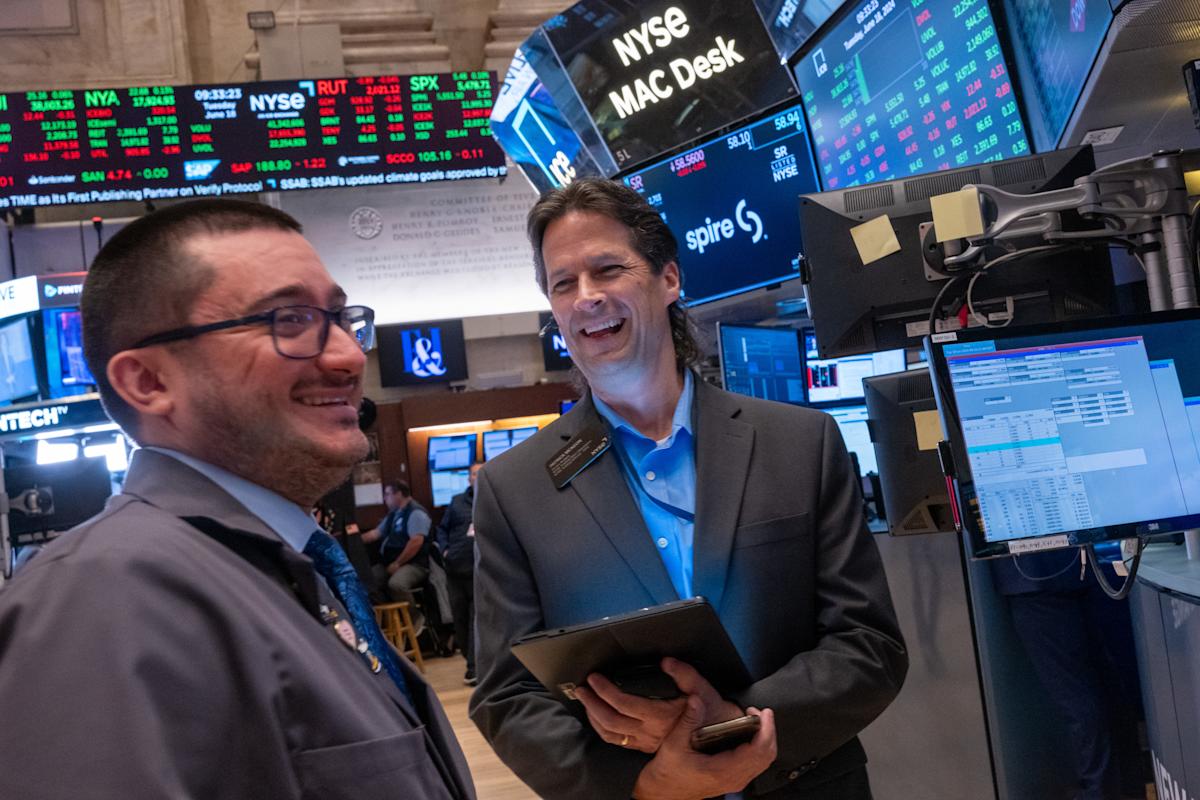Investors haven’t been this bullish on stocks since February
Wall Street fund managers are piling back into equities, even as the economic backdrop turns shakier.
Bank of America’s latest Global Fund Manager Survey, released Tuesday, showed global equity allocations for September rose to a seven-month high while average cash balances held steady at just 3.9% for the third straight month — a level that often signals caution as investors run short on dry powder.
Still, BofA strategist Michael Hartnett noted sentiment hasn’t tipped into full-blown euphoria. That would require cash to fall below 3.7% or equity allocations to climb above 30%. At current levels, with 28% of fund managers overweight on global equities, investors are bullish but not yet at the “hubris” point that has historically marked a contrarian sell signal.
Even so, that optimism is bleeding into markets: The S&P 500 (^GSPC) closed at another record on Monday, while the Nasdaq stretched its winning streak to six straight all-time highs.
Strategists at Wells Fargo, Barclays, Deutsche Bank, and Yardeni Research have all lifted their S&P 500 forecasts in recent days, citing resilient earnings, the AI investment cycle, and an expected easing of interest rates by the Federal Reserve as the backbone of the market’s next leg higher.
Nearly half of fund managers in the BofA survey also expect the Fed to cut rates at least four times in the next 12 months, broadly in line with markets, which are pricing in between five and six cuts.
But cracks are showing in the stock market’s rally. The “long Magnificent Seven” trade remains the most crowded on Wall Street, underscoring how dependent the rally still is on a narrow band of megacap tech. And 77% of fund managers now expect a “stagflationary” environment — sluggish growth paired with sticky inflation and higher unemployment — a reminder of how uneasy the macro backdrop remains.
That tension is playing out in what JPMorgan has called “the curious case of a jobless expansion,” where stocks climb on Fed cut hopes and easing wage pressures even as the labor market deteriorates. Piper Sandler notes this isn’t unprecedented: In the 1950s, 1960s, and early 1990s, unemployment rose alongside stocks as weaker jobs pulled rates lower and valuations higher.
Read more: August CPI report shows consumers feeling the heat of accelerating inflation
For their part, American consumers are increasingly less optimistic about the economy.
Recent data shows consumer sentiment has slumped, especially among households squeezed by tariffs and rising prices. The University of Michigan’s September survey fell to its lowest level since May, with long-term inflation expectations jumping for a second straight month.



Leave a Comment
Your email address will not be published. Required fields are marked *